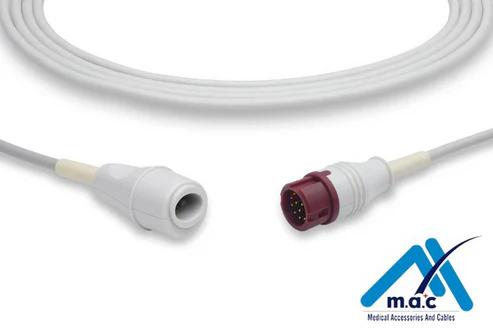In today's fast-paced healthcare environment, efficiency is paramount. Hospitals and clinics strive to deliver timely, accurate, and effective patient care while managing costs and optimizing resources. One critical component of this efficiency is the seamless integration of medical devices. IBP adapter cables play a pivotal role in connecting invasive blood pressure (IBP) monitoring devices to patient monitors, ensuring accurate and reliable data transmission.
Understanding IBP Adapter Cables
IBP adapter cables are specialized connectors that facilitate the communication between IBP transducers and patient monitors. These cables transmit the analog or digital signals generated by the transducer to the monitor, where they are processed and displayed. The compatibility of these cables is crucial to ensure accurate and reliable IBP measurements.
Key Benefits of IBP Adapter Cables
- Accurate and Reliable Measurements: IBP adapter cables are designed to transmit signals with minimal distortion, ensuring that the data displayed on the patient monitor is accurate and reliable. This is essential for making informed clinical decisions and monitoring patient conditions effectively.
- Improved Efficiency: By simplifying the connection process between IBP transducers and patient monitors, IBP adapter cables streamline the workflow and reduce the time required for setup. This can lead to increased efficiency and improved patient throughput.
- Enhanced Patient Safety: Accurate IBP measurements are critical for monitoring patient hemodynamics and detecting potential complications. By ensuring reliable data transmission, IBP adapter cables contribute to patient safety and help prevent adverse events.
- Cost-Effectiveness: Investing in high-quality IBP adapter cables can be a cost-effective solution in the long run. These cables are durable and can withstand frequent use, reducing the need for frequent replacements and minimizing maintenance costs.
- Interoperability: IBP adapter cables are available in various configurations to support different types of IBP transducers and patient monitors. This interoperability ensures compatibility and flexibility in healthcare settings.
Choosing the Right IBP Adapter Cable
When selecting IBP adapter cables, it is essential to consider the following factors:
- Compatibility: Ensure that the cable is compatible with both the IBP transducer and the patient monitor being used.
- Length: Choose a cable length that is appropriate for the specific clinical setting to avoid excessive cable clutter and potential tripping hazards.
- Durability: Opt for cables that are constructed from high-quality materials to ensure longevity and resistance to wear and tear.
- Ease of Use: Consider the ease of connection and disconnection, as well as the cable's flexibility and maneuverability.
Conclusion
IBP adapter cables are indispensable components in modern healthcare settings. By facilitating seamless communication between IBP transducers and patient monitors, these cables contribute to accurate measurements, improved efficiency, enhanced patient safety, and cost-effectiveness. As healthcare providers continue to seek innovative solutions to optimize patient care, IBP adapter cables will remain a vital tool for ensuring reliable and efficient monitoring of patient hemodynamics.

